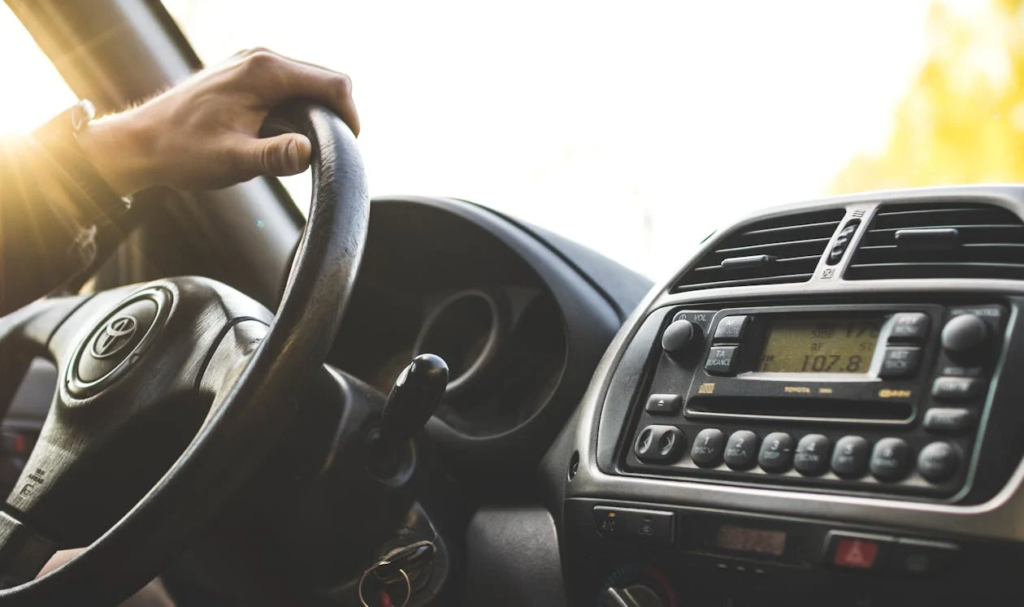Cars are an amazing way to get around. They’ve been around for over a century now. Families all over the world use them daily to exercise their freedom and convenience to travel anywhere, any time. Let’s check out some tips for finding low-maintenance cars that will last a long time.
The Total Cost of Ownership
When it comes to buying cars you may find yourself dropping thirty bands on your new brand new whip. In an ideal world our cars would work infinitely without any maintenance. Problem is that these wheel-propelled metal objects need lots of upkeep. And like most things they degrade as time goes on.
The total cost of ownership counts the cost of owning your car over a certain period time, including things like:
- Gas or fuel: is the cost to fill up your car tank, based on 15,000 miles per year.
- Maintenance: the costs of keeping your whip running nice.
- Car insurance: when you need to cover your butt in events like accidents.
- Repairs: when one of your car parts stops working right.
- Financing: how you can pay to get some wheels, such as a car loan, if you can’t buy it outright with cash.
- State fees: includes things like sales tax, license, and registration.
- Depreciation: the car’s loss of value, specifically the difference between what you paid and its current resale value.

Copping a New vs. Used Car
The National Automobile Dealers Association knows a lot about people and cars. They said that most people end up owning \13 cars in their lives, with each being roughly $30,000. The crew noticed that if people instead bought those cars used and were three years old people would save almost $130,000 in their lifetimes compared to buying brand new cars. This is a good start to scoping out some low-maintenance cars.
Advantages of Buying a Used, Low-Maintenance Car
Used cars aren’t all that bad. Their main benefit is that their biggest depreciation has already happened. Let’s check out what this depreciation stuff is all about. When you buy a new car it’s value drops about 20% in the first year of owning it. After that it loses about 15% of its value each year until its value is only worth 40-60% of its purchase price after 5 years.
When Your Whip Loses Value, What Do?
Car depreciation sucks and there’s nothing anyone can do it about it. Like the presence of God, it will always exist. However, you can slow down and limit how quickly your car value drops so that if you ever have to sell your whip you can sell it for some good bread. Peep game because here’s how it’s done.
Because strait is the gate, and narrow is the way, which leadeth unto life, and few there be that find it.
Mathew 7:14 of the King James Version of the Holy Bible
How to Duck Car Depreciation Through Low-Maintenance Cars
Maintain your Car
If you haven’t developed this already, a habit of regularly maintaining your whip is key. This shows that you respect your car and are responsible enough to keep its value high.
Sell the Car Yourself
Trading in your car at the car dealership is so convenient. However, selling it yourself lets you sell it at market value. Not only that, but you can keep the costs that the dealer will add to the cost of your used car. Winner winner, chicken dinner.
Don’t Customize Your Car
How come no one’s rolling down the road with their own customizations to their whip to show who they are? Boring people. As cool as customizations are they will make less people want to buy it, especially flashy add-ons. Avoiding customizations and flashy add-ons will keep your car attractive to a majority of used-car buyers.
Scope Out Those Tax Breaks
What do tax advisors, your car, and your side business have in common? Them tax deductions, baby. Your tax advisor could dish you a nice assist by deducting a portion of your car’s depreciation on your tax return.
What Makes Cars Depreciate or Lose Value?
Here’s a ranking of stuff most likely to drop your car’s value:
- how old it is
- mileage
- its brand name
- if it’s a luxury car
- the type of car it is
- its condition
- service or maintenance records
- accidents or damage
- number of owners
- if it was once a fleet vehicle
- features and current technology
Cars age and lose value with each passing year, and that clock never stops ticking.
Used car’s value relies heavily on how many unused miles it has. For example, driving an average of 7,500 miles per year over five years or more can reduce depreciation by thousands compared with driving 15,000 miles per year.
Companies that makes cars without discounting them have better resale value than those that do.
While luxury car makers charge more for their cars, they won’t necessarily hold a bigger share of their original value than a lower-priced car. On the contrary, some luxury cars costing $60,000 or more lose value quicker than a $30,000 car.
SUV & pickup trucks are today’s most popular types of cars, making up two-thirds of American sales in 2020 in both the new and used-car market. Sedans and hatchbacks are less popular and have a high likelihood of faster depreciation, though that can vary by brand.
A clean car that looks in good shape is easy to resell. Clean cars need less reconditioning. Rust is expensive or impossible to repair. Bald tires, squeaky breaks, and smoke coming out of the tailpipe are very hard to sell. A car that starts, stops, and runs well will be worth much more.
Records of regular maintenance boost resale value. These are receipts documenting oil changes, tire rotations, fluid flushes, and other services.
A car that’s never been in an accident will depreciate less than one that has. This is because replacing body parts and repainting often leave telltale signs of an accident. Even a minor fender-bender is going to speed up depreciation. It’s hard to tell how bad an accident was and what wasn’t repaired.
The fewer owners a vehicle has, the less it will depreciate. A car with multiple owners make people wonder what’s wrong with it?
Many late-model used cars started as rental cars. Hundreds of drivers drove the car with varying degrees of care. A one-owner, privately owned vehicle most likely got more TLC than a rental car – often a lot more.
Convenience features such as Bluetooth, Apple CarPlay, wireless phone charging, remote start, backup cameras, automatic emergency braking, lane-keeping assist, and adaptive headlights that swivel in the direction of turns are becoming normal. If your car doesn’t have them, it won’t be worth as much as those that do. More buyers want and expect to find these features on their car, whether it’s new or used.
The Go-To Manufacturers for Low-Maintenance Cars

Toyota
For decades Toyota has been known to make dependable, reliable, and low-maintenance cars including the Camry, Tacoma, and the Corolla. The Toyota Corolla is among the cheapest cars to maintain and repair. It’s fuel economy rating and comfort make it one of the most popular vehicles among car buyers who don’t want to pay a lot to maintain their vehicle. The Toyota Camry has low-maintenance costs. The car’s readily available parts and four-cylinder model is easy to repair and cheap to maintain.
Honda Civic
Honda Civic is one of the cheapest foreign cars to maintain. Their parts are very easy to find and are readily available when needed. Its repairs are easy to do, making for cheaper DIY and mechanic repairs.
Sidestep Those Car Maintenance Costs
Here are the ways you can extend your car’s life as if it was training to enter a marathon. Find a reliable, low-maintenance car that you will take care of.
Change Your Oil and Oil Filter Regularly
Changing your oil and oil filter is one of the top factors to maintain low-maintenance cars, especially their engines. Clean oil is key to maintain a healthy engine and a long car lifespan. This dodges corrosion and build-up that can affect your engine.
Wash Your Whip
Not washing your car invites rust to pull up and decay the car after a buildup of dirt, mud, and salt over time.
Keep Your Engine Air Filter Clean
Keep your engine clean. Your car’s engine air filter keeps all the dust and dirt away. This ensures dust doesn’t reach the engine to cause damage and build up. Using a dirty air filter gets costly down the road. Replacing engine parts is more expensive than replacing an air filter.
Watch Your Tire Pressure Regularly
Check your tire pressure every month, especially in cold winter months. Cars nowadays warn you if your tire pressures fall under a certain level. Driving with under-inflated tires can wear down your tires more, lower gas mileage, and fuel economy.
Go Easy on Your Whip
Driving smart and carefully keeps the maintenance costs away. One way is to limit constant and sudden acceleration or slowdowns of your car. Constantly hard braking and turning fast affect your fuel economy and wear down your tires and brakes. A steady driving speed gives you the best fuel economy. Being aware of stuff, like avoiding big potholes, will get you some love from your car’s suspension and shock.
Which Car Brands Are Undefeated in Terms of Durability?
Car life spans can be measured by it’s average life time or total ten-year maintenance cost. Based on these measures, the Toyota and Honda clear winners when it comes to being built to last.
| Car Model | MSRP | 10-Year Average Maintenance/Repair Costs | Maintenance Cost vs. New Price |
| Toyota Yaris | $17,750 | $4,033 | 22.7% |
| Toyota Corolla | $20,025 | $4,083 | 20.3% |
| Toyota Prius | $24,525 | $4,098 | 16.7% |
| Toyota Camry | $25,045 | $4,211 | 16.8% |
| Toyota Avalon | $36,125 | $4,409 | 12.2% |
| Honda Fit | $16,190 | $5,033 | 31.0% |
| Mitsubishi Mirage | $14,295 | $5,062 | 35.4% |
| Honda Civic | $21,250 | $5,250 | 24.7% |
| Honda Insight | $23,130 | $5,310 | 22.9% |
| Honda Versa | $14,980 | $5,340 | 35.6% |
Summary
Cars are pretty cool. They come in all shapes and sizes. The advertised price only tells part of the story. A more accurate way to view the true cost of your whip is by looking at the total cost of ownership. New and used cars each come with their pros and cons. Toyota and Honda are dominating the space of durable and reliable cars.
What else do you think makes a car built to last? What’s the oldest car model you’ve seen that’s still running? What else do you think is important when it comes to locking down a car that will last you a long time? Share your favourite low-maintenance cars.
Leave your answer in the comments and be sure to share the content!



you forgot safety rating and crash rate most people will not want to buy a vechile if a its been in accidnet before and b if its safety rating is low it means if you get in an accident how likely you are to survive is revelant
That’s facts. Thanks for bringing that up. Those car crash test videos on the Internet aren’t made for giggles only.